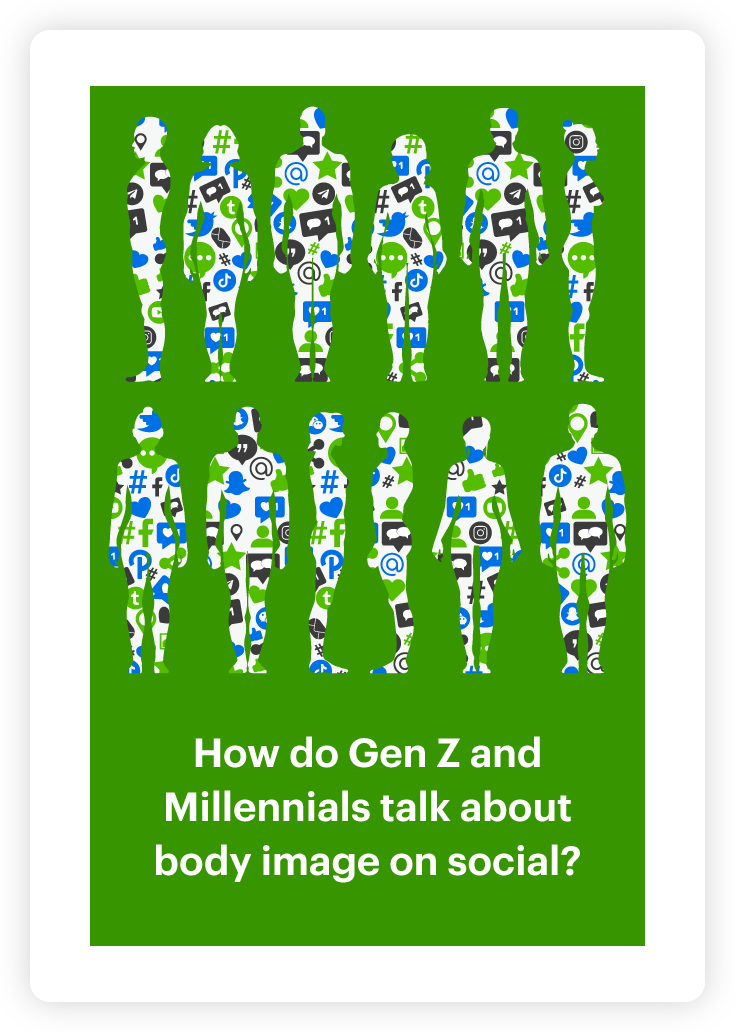How do UK celebrity chefs differentiate themselves on social?

By Nancy Conroy, Commercial Associate
The cult of the celebrity chef is bigger today than ever before. The UK’s insatiable appetite for TV personalities and shows alike, from Kitchen Nightmare’s Gordon Ramsay to The Great British Bake Off, has propelled celebrity chefs beyond the four walls of the kitchen and into the spotlight.
In today’s culture, fame and food go hand in hand as chefs can now reach millions of people through cookbooks, restaurant franchises, TV shows, and even pet food! Celebrity chefs have become so big that some are recognizable by a single word or phrase alone – need I say more than ‘meehcrowavey’ or ‘idiot sandwich’. But beyond all of the assumed food chatter, how are these culinary personalities differentiating themselves on the social stage?
I wanted to investigate how some of the UK’s biggest celebrity chefs – Nadiya Hussain, Gordon Ramsay, Jamie Oliver and Nigella Lawson – cut through the noise of a saturated culinary landscape by comparing how they speak on Twitter.
Relative Insight’s text analytics platform allows you to compare two or more qualitative data sets and in this case, analyze the differences in the language used by celebrity chefs on social. Pulling tweets from the last 12 months, I uploaded this raw social data to Relative Insight and was able to identify the topics, words, phrases, grammar, and emotion unique to each individual. This form of social media analysis looks beyond the generic and prevalent terms you’d expect to see around conversations of food or cooking. Instead, it reveals the distinct linguistic tendencies of each chef.
Nadiya Hussain
Nadiya Hussain has become one of the most successful Great British Bake Off winners to date. Her accomplishments include TV shows, children’s books and baking the Queen’s 90th birthday cake. But even with her rise to baking royalty, Nadiya has remained humble.
Over-indexing on mentions of mental health, Nadiya Hussain shares her own personal experiences with anxiety and in doing so helps raise awareness among her followers. Nadiya is 10.7x more likely to talk about supporting different causes and donating money, as well as mentioning the bravery of individuals facing these troubling times.
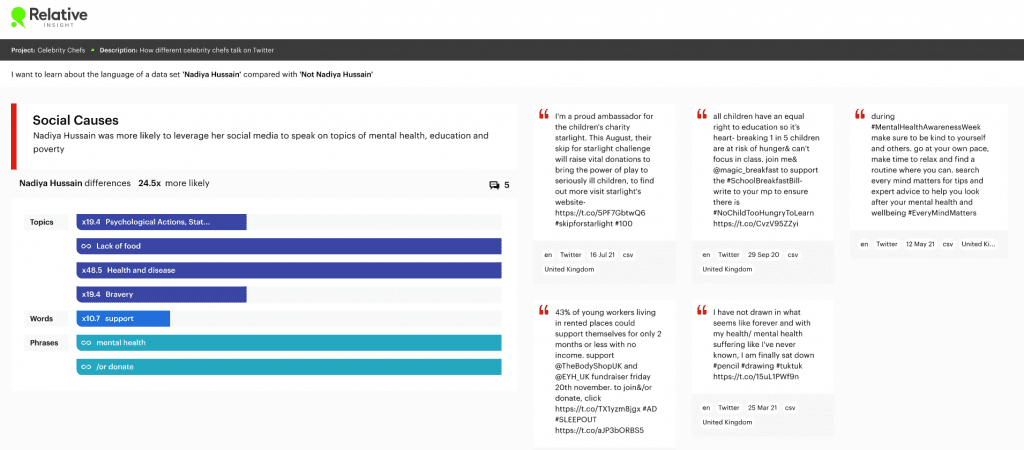
My analysis found that Nadiya Hussain is more likely to leverage her social media to speak about important social issues such as poverty, hunger and mental health, turning her culinary standing on its head to talk about the lack of food that many people experience.
Gordon Ramsay
Cooking up a storm in the kitchen, Gordon Ramsay is arguably one of the most famous celebrity chefs in the world. But it is his foul-mouthed and hot-headed personality that often seems to carry his brand more than any dish that has ever left his kitchen.
There is a competitive spirit in the way Gordon Ramsay speaks on Twitter. He is 5.5x more likely to speak about the act of cooking in the context of a game.
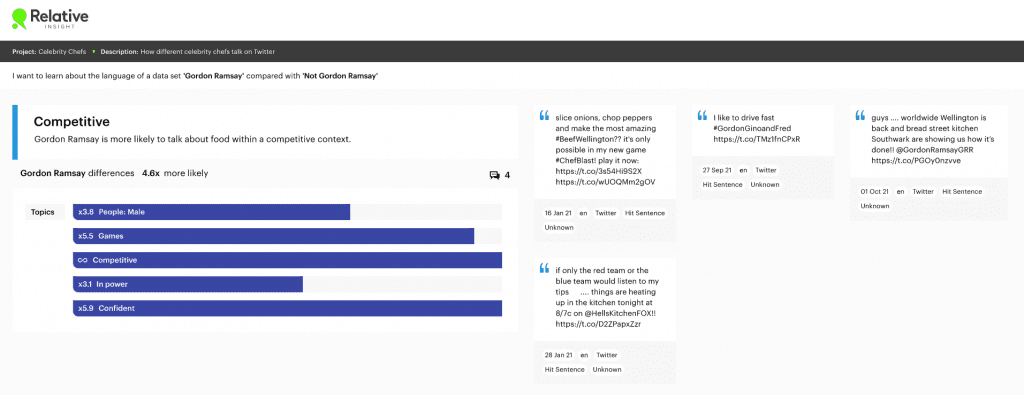
Ramsay is also 2.4x more likely to use dynamic and immediate language on Twitter, with words like now and present participles like moving, making and going reinforcing the speed and action of his cooking style. His use of maximizers to describe food, like absolutely and most, reflects his love of cooking and passion for food.
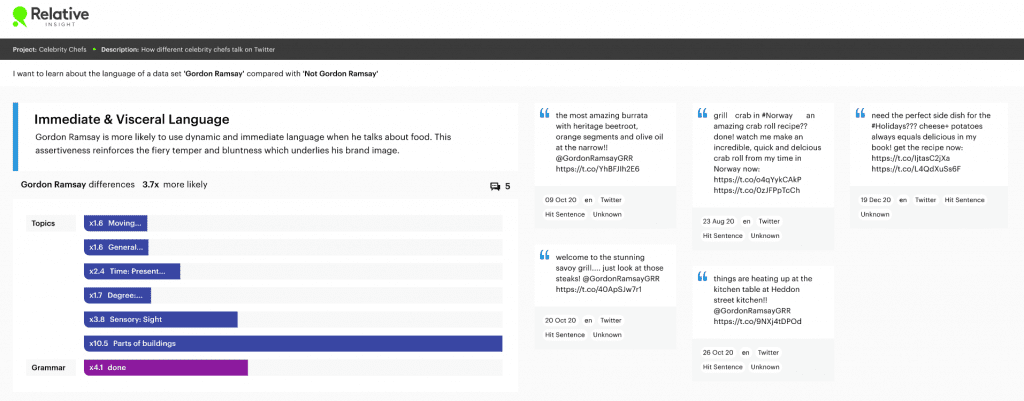
Topics associated with the visceral and physical aspects of cooking are 10.5x more likely to come up on Gordon Ramsay’s Twitter, as he was more likely to talk about parts of buildings, ie. the kitchen where the act of cooking takes place, or sensory descriptors of what food looks like. There is a sense that Gordon Ramsay uses his social media to set the scene and taps into what people want – the suspense, drama and adventure of cooking.
Jamie Oliver
Jamie Oliver is a celebrity chef who inspires healthy, affordable and everyday food that brings people together. He takes a more accessible approach when talking about food, with a greater use of plural pronouns like we and us. By talking about cooking in this collective way, he brings food back to the home, making it about friends and family getting together.
Jamie Oliver taps into the emotive side of cooking and its ability to bring about memories. This is evident in the way he playfully engages the senses, being 3.7x more likely to talk about the texture of food, using adjectives like crispy, fluffy and melt in your mouth.
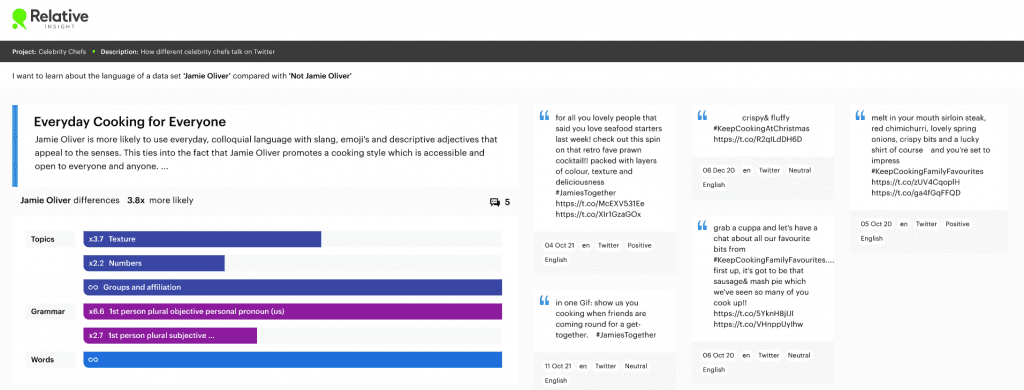
Paying homage to a cooking style that is stripped back and simple, The Naked Chef’s language reflects this, over-indexing on the use of emojis and drawing on colloquial terms like fave and grab a cuppa. This is the language of the everyday, relatable and down to earth.
Nigella Lawson
As one might expect from our meehcrowavey meme-Queen, Nigella Lawson has a way when it comes to words. Although her cooking style invites ease and simplicity, her language indulges and tempts.
Embracing simplicity, Nigella eschews over-complicated preparation in favor of things any novice home cook could make. The analysis found that Nigella is 7.2x more likely to refer to the calming quality of cooking and 3x more likely to describe it as easy. Her use of language like whatever and whenever and her mention of quantities like little or some as opposed to exact measurements reinstates the carefree approach she has towards cooking.
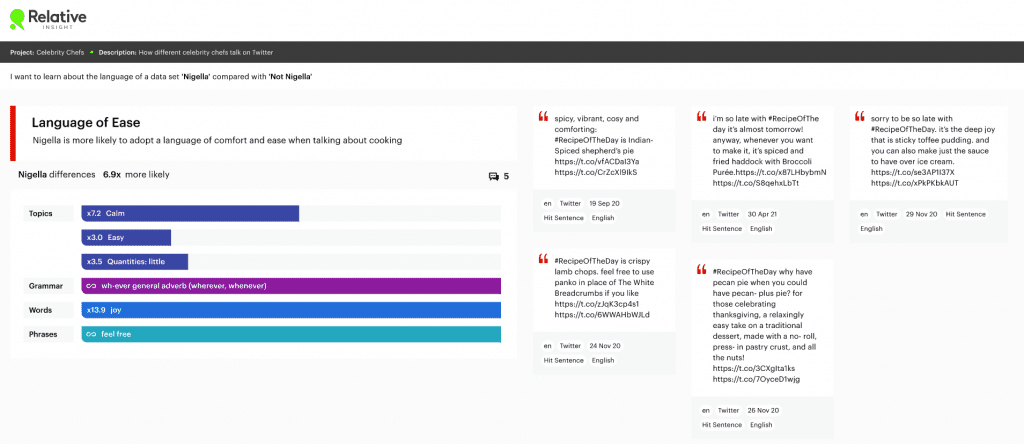
Nigella is also 2.2x more likely to appeal to the sensory feeling and physical properties of food, using language which reinstates the appeal of comfort food in its ability to make you feel good, not only when you eat it but when you cook it.
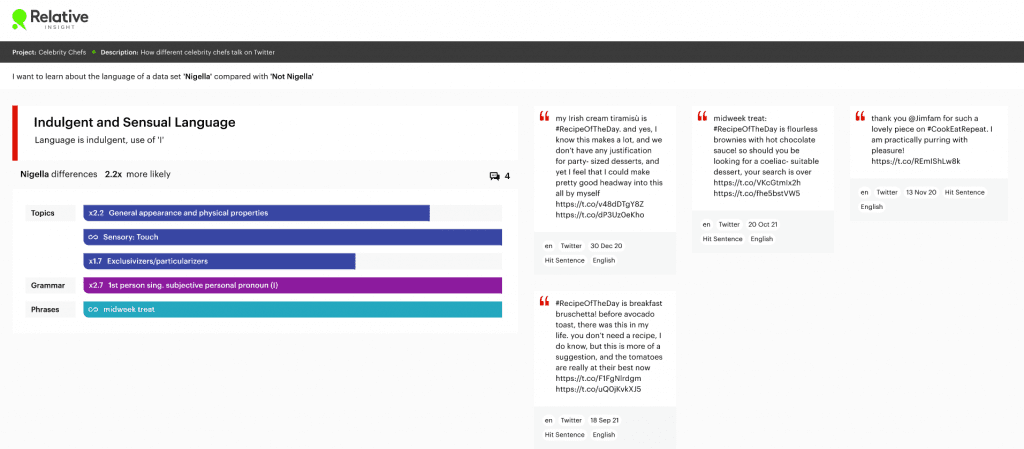
Relative Insight utilizes comparative text analytics to look beyond the frequency of words, filtering out common language to reveal the unique descriptors used by each individual celebrity chef, whether it be the socially conscious big-hearted baker, the domestic goddess, the competitive chef or the down-to-earth home cook.
